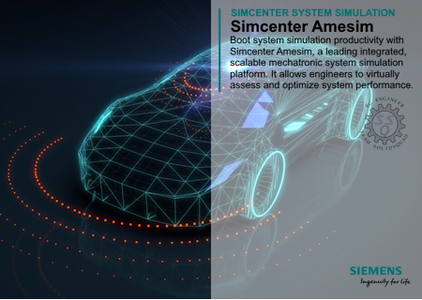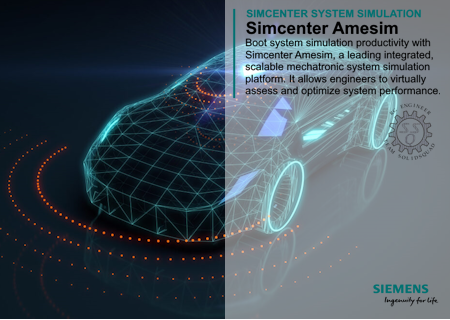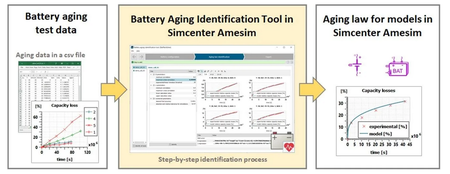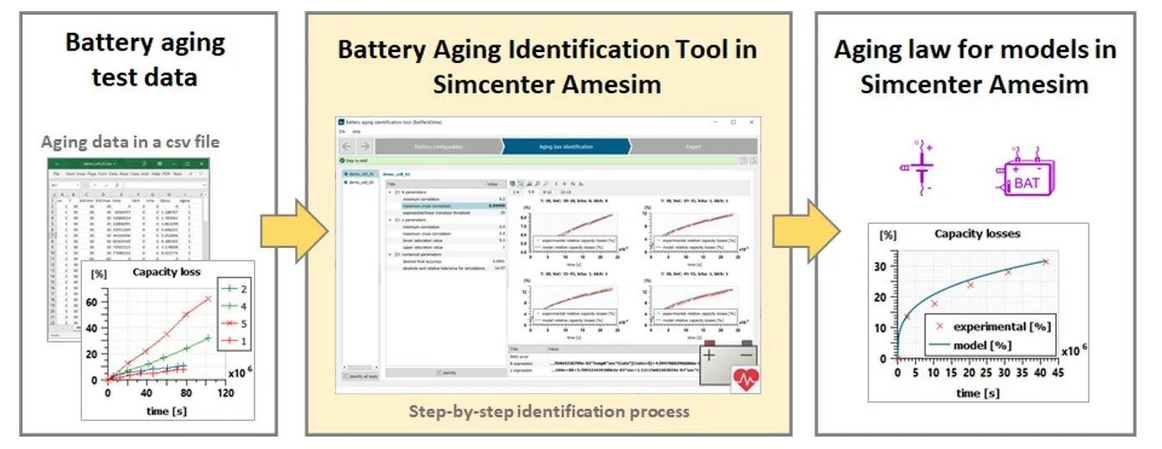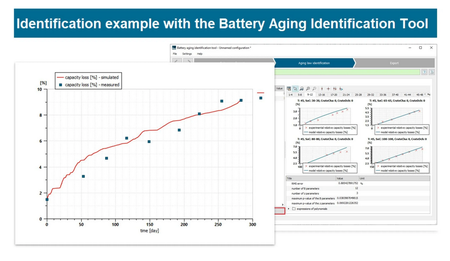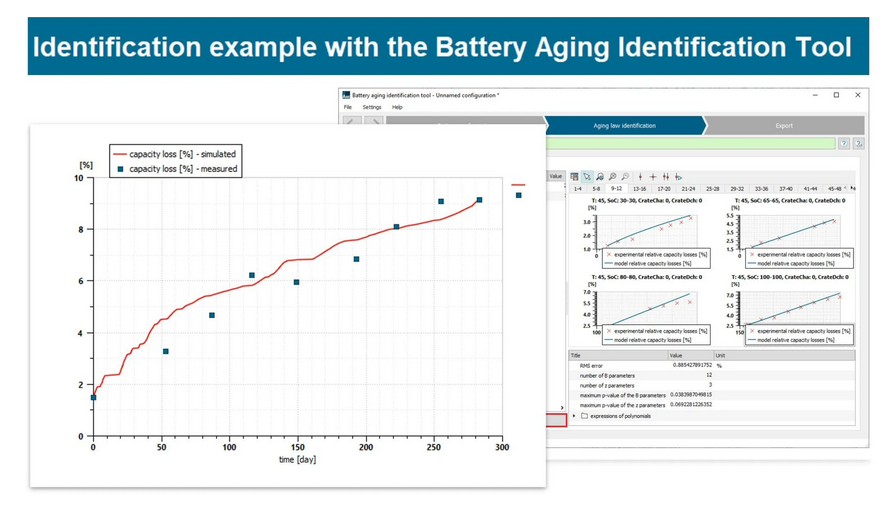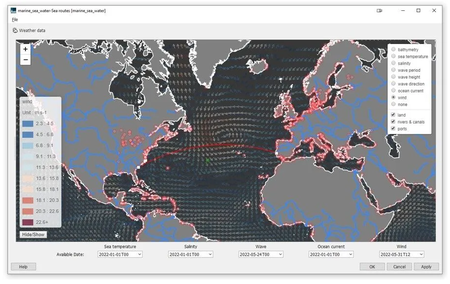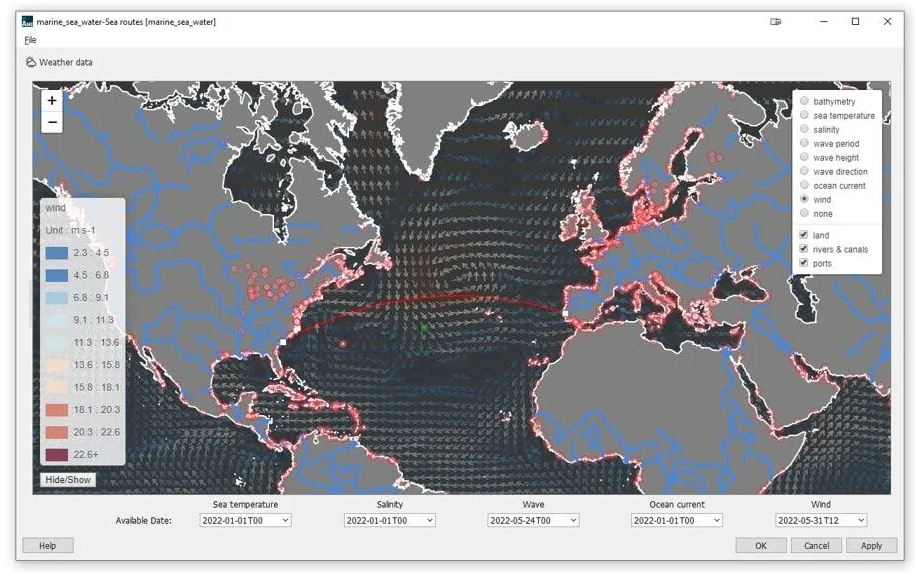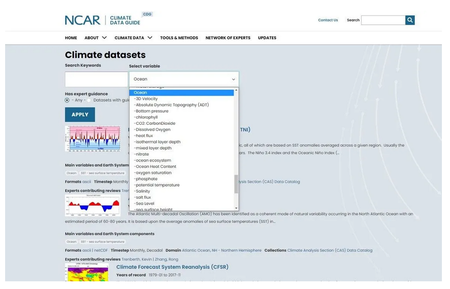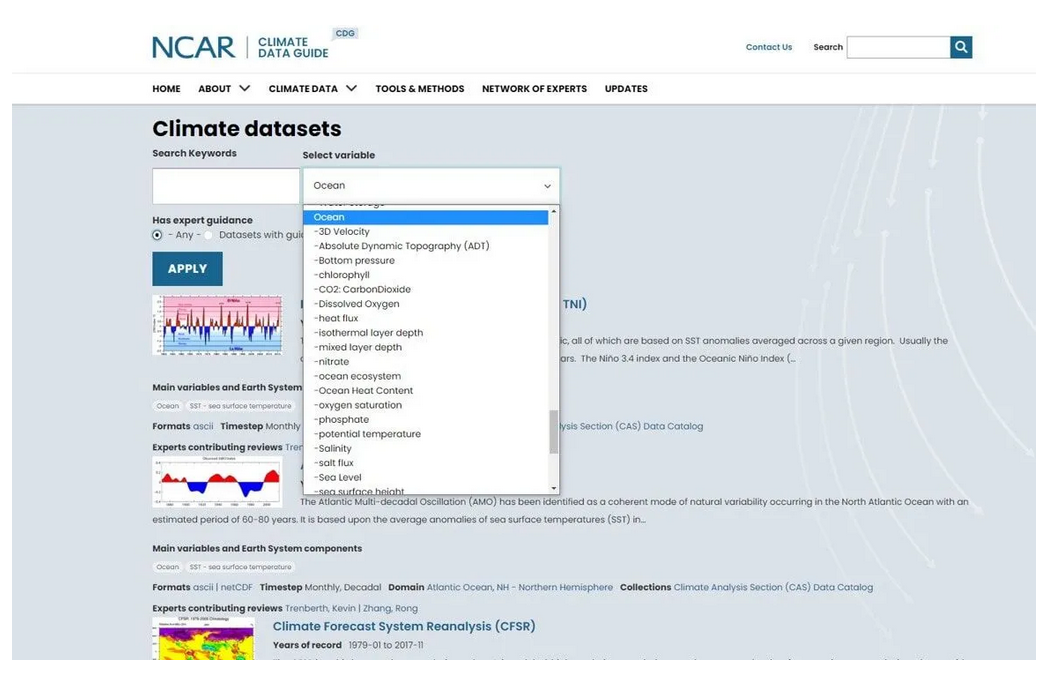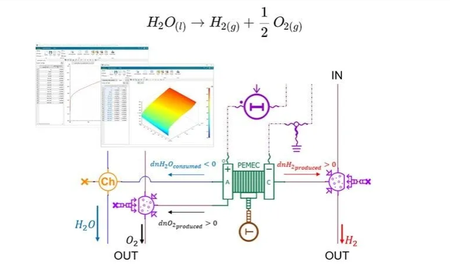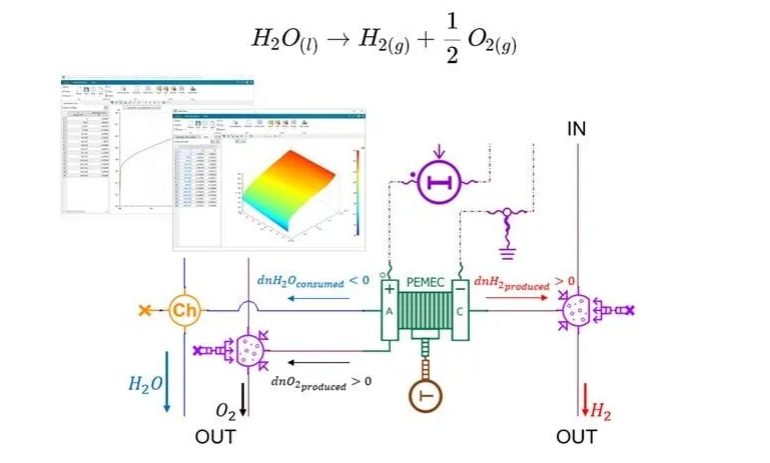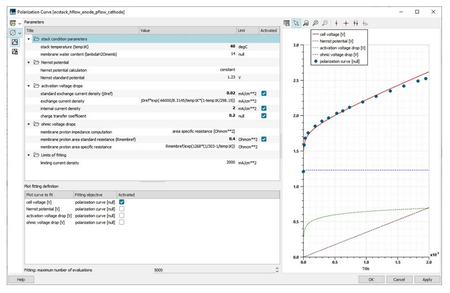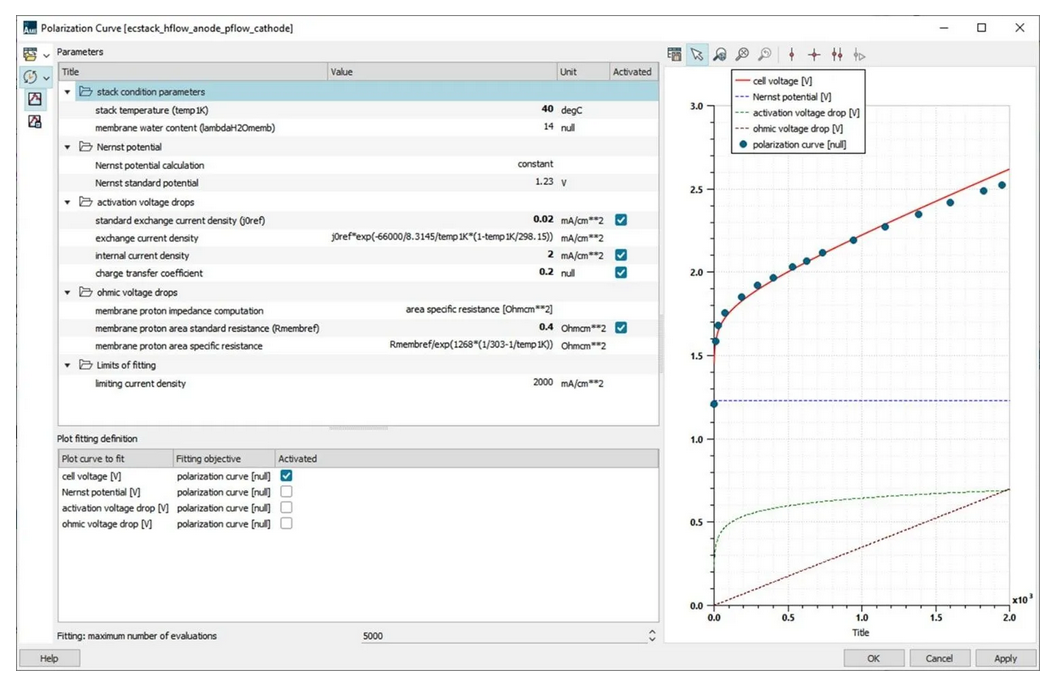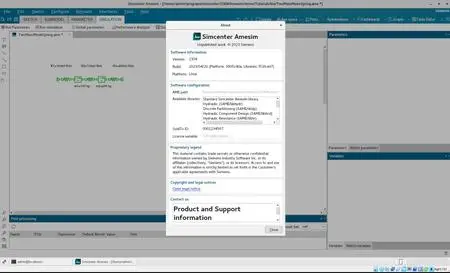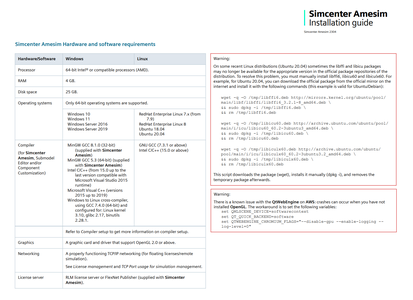Siemens Simcenter Amesim 2304 | 10.1 Gb
Simcenter Systems Simulation 2304 has released, containing many exciting new features that will help its users to go faster, deal with more complexity, better integrate and explore new possibilities.
New features in release 2304 for Simcenter Amesim - Date: June 2, 2023
Amesim is a cross industry tool for modeling and simulating performance of multi-domain systems and components. The latest version of Amesim comes with several new features that make it more powerful and efficient than ever before.
Here’s a sneak peak
- Improved User Interface: completely redesigned to make it more intuitive and user-friendly. The new interface is more modern and streamlined
- Faster and More Accurate Simulations: handle larger and more complex models with ease, and it can simulate them more quickly and accurately.
- Enhanced Collaboration Features: work with others on a project, share models, data, and results with other users, and you can collaborate in real-time.
- Improved Model Management: now you can now organize your models more efficiently, and you can search for models more easily.
Battery Aging Identification Tool
The consequences of battery aging typically involve capacity loss, resistance increase, and could lead to changes in battery shape in addition to a different thermal runaway behavior. Understanding how battery aging is influenced by charging/discharging patterns, thermal management strategies, ambient conditions, and time is needless to say, important. The Battery Aging Identification Tool is used to identify a generic empirical aging law for batteries by running an iterative routine to match against experimental aging test results. The aging data corresponds to the battery capacity loss over time at different test conditions, such as different State of Charge (SoC), different ambient conditions, and different charge and discharge currents (C-rates). To guide through the data import and identification process a step-by-step process is provided. The final aging law will be influenced by changes in State of Charge (SoC), C-rate and temperature and may be used to study aging caused by storage, i.e. calendar aging, and aging due to operation when cycling through charging and discharging of a battery. Connecting the battery to a complete system model inside Simcenter Amesim allows for the study of battery capacity loss with even more realistic and dynamic scenarios.
To explore how this new feature may be used a demonstrator model titled “Identification example with the Battery Aging Identification Tool” is provided. The demo model is also a validation model to provide an example of how well this approach compares to actual battery aging testing. To this extent, test data of a 12S1P NMC/C battery module from an electric vehicle running the well-known Worldwide harmonized Light vehicles Test Procedure (WLTP) was used.
Sea Routes App
As the name suggests, the new Sea Routes Application enables users to quickly create customized shipping routes which consider realistic weather conditions at each given “GPS” position. The route, as well as the weather conditions along the route, are then stored as a data file and can be referenced throughout the entire simulation to determine how the weather may affect a particular ship design or propulsion architecture.
The pre-processing tool relies on weather data which provides the calculations with the behavior for salinity, temperature, winds, waves, and currents. Weather data can be added to the tool by downloading NetCDF data-sets from for example climatedataguide.ucar.edu. As outlined in the image below, navigate to climate data and select Ocean from the dropdown menu. By default, the Sea Routes App uses the weather data-set stored in marine library’s resources (installation directory), and may be conveniently used when starting to explore this new capability.
New Proton Exchange Mebrane Electrolyzer (PEMEC)
A new scalable electrochemical Proton Exchange Membrane Electrolyzer (PEMEC) has been added to the Fuel Cell Components library to enable the simulation of hydrogen production. The component is a quasi-static model of a PEMEC stack which computes stack voltage based on calculations of cell voltage using either voltage equations or polarization curves/surfaces. The model accounts for the impact of temperature and pressure on performance, making it possible to study a wide temperature/pressure range. Water transport and O2/H2 diffusion in the membrane can also be accounted for by selecting among the model’s parameters.,Heat losses resulting from electrolysis are determined by considering the thermoneutral voltage, i.e. the voltage drop across an electrochemical cell required to drive the electrolysis, as well as maintain cell temperature at constant temperature. If the cell voltage is higher than the thermoneutral voltage, then part of the electric energy will be converted to waste heat with a consequent temperature rise.
By right clicking the PEMEC component, a dedicated pre-processing tool named Electrolyzer Polarization Curve can be launched. The tool, which purpose is to identify parameter settings for the electrolyzer model based on a user supplied polarization/overpotential curve, can then be used to automatically match the tested cell voltage curve [V] through an iterative process. The image below provides an overview of the tool.
The consequences of battery aging typically involve capacity loss, resistance increase, and could lead to changes in battery shape in addition to a different thermal runaway behavior. Understanding how battery aging is influenced by charging/discharging patterns, thermal management strategies, ambient conditions, and time is needless to say, important. The Battery Aging Identification Tool is used to identify a generic empirical aging law for batteries by running an iterative routine to match against experimental aging test results. The aging data corresponds to the battery capacity loss over time at different test conditions, such as different State of Charge (SoC), different ambient conditions, and different charge and discharge currents (C-rates). To guide through the data import and identification process a step-by-step process is provided. The final aging law will be influenced by changes in State of Charge (SoC), C-rate and temperature and may be used to study aging caused by storage, i.e. calendar aging, and aging due to operation when cycling through charging and discharging of a battery. Connecting the battery to a complete system model inside Simcenter Amesim allows for the study of battery capacity loss with even more realistic and dynamic scenarios.
To explore how this new feature may be used a demonstrator model titled “Identification example with the Battery Aging Identification Tool” is provided. The demo model is also a validation model to provide an example of how well this approach compares to actual battery aging testing. To this extent, test data of a 12S1P NMC/C battery module from an electric vehicle running the well-known Worldwide harmonized Light vehicles Test Procedure (WLTP) was used.
Sea Routes App
As the name suggests, the new Sea Routes Application enables users to quickly create customized shipping routes which consider realistic weather conditions at each given “GPS” position. The route, as well as the weather conditions along the route, are then stored as a data file and can be referenced throughout the entire simulation to determine how the weather may affect a particular ship design or propulsion architecture.
The pre-processing tool relies on weather data which provides the calculations with the behavior for salinity, temperature, winds, waves, and currents. Weather data can be added to the tool by downloading NetCDF data-sets from for example climatedataguide.ucar.edu. As outlined in the image below, navigate to climate data and select Ocean from the dropdown menu. By default, the Sea Routes App uses the weather data-set stored in marine library’s resources (installation directory), and may be conveniently used when starting to explore this new capability.
New Proton Exchange Mebrane Electrolyzer (PEMEC)
A new scalable electrochemical Proton Exchange Membrane Electrolyzer (PEMEC) has been added to the Fuel Cell Components library to enable the simulation of hydrogen production. The component is a quasi-static model of a PEMEC stack which computes stack voltage based on calculations of cell voltage using either voltage equations or polarization curves/surfaces. The model accounts for the impact of temperature and pressure on performance, making it possible to study a wide temperature/pressure range. Water transport and O2/H2 diffusion in the membrane can also be accounted for by selecting among the model’s parameters.,Heat losses resulting from electrolysis are determined by considering the thermoneutral voltage, i.e. the voltage drop across an electrochemical cell required to drive the electrolysis, as well as maintain cell temperature at constant temperature. If the cell voltage is higher than the thermoneutral voltage, then part of the electric energy will be converted to waste heat with a consequent temperature rise.
By right clicking the PEMEC component, a dedicated pre-processing tool named Electrolyzer Polarization Curve can be launched. The tool, which purpose is to identify parameter settings for the electrolyzer model based on a user supplied polarization/overpotential curve, can then be used to automatically match the tested cell voltage curve [V] through an iterative process. The image below provides an overview of the tool.
Simcenter software uniquely combines system simulation, 3D CAE and test to help you predict performance across all critical attributes earlier and throughout the entire product lifecycle. By combining physics-based simulations with insights gained from data analytics, Simcenter helps you optimize design and deliver innovations faster and with greater confidence.
Simcenter Amesim is a fully integrated scalable simulation platform for modelling and analyzing various types of multi-domain systems. Simcenter Amesim allows engineers to assess and optimize the performance of systems, improving productivity. Amesim has an extensive set of libraries which feature components for different physical domains such as electrical fluis and mechanical systems components.
In the most recent release of Simcenter Amesim, version 2304, some much-appreciated updates have been made when it comes to both the platform features as well as the individual libraries. On the pre-processing side, a new built-in Graph Digitizer has been made available which allows users to collect datapoints from graphs and images. For example, when trying to collect data from research papers, it can be a particular hassle to extract the data being referenced. If the only thing available to you is a plot or an image, Graph Digitizer can aid you with obtaining the results, a real time saver! Another interesting platform improvement is the Contextual Variable Highlight which allows users to directly access the variables detected by the performance analyzer’s state contributions through a simple double-click. The intensions with this feature are to enable quicker troubleshooting and debugging of models. To mention one more of the many platform improvements implemented in the 2304 release, component submodels and parameter values can now be set/entered directly in the sketch mode to facilitate quicker model building.
WHAT’S NEW Systems 2304 I Simcenter
This release contains many exciting new features that will help its users to go faster, deal with more complexity, better integrate and explore new possibilities. It will support you in increased innovation, reduced development lead times, and improved productivity.
[[b]Siemens PLM Software, a business unit of the Siemens Digital Factory Division, is a leading global provider of software solutions to drive the digital transformation of industry, creating new opportunities for manufacturers to realize innovation. With headquarters in Plano, Texas, and over 140,000 customers worldwide, Siemens PLM Software works with companies of all sizes to transform the way ideas come to life, the way products are realized, and the way products and assets in operation are used and understood.
Owner: Siemens PLM Software
Product Name: Simcenter Amesim
Version: 2304
Supported Architectures: x64
Website Home Page : https://plm.sw.siemens.com/
Languages Supported: english
System Requirements: Windows & Linux *
Size: 10.1 Gb
Please visit my blog
Added by 3% of the overall size of the archive of information for the restoration
No mirrors please
Added by 3% of the overall size of the archive of information for the restoration
No mirrors please


